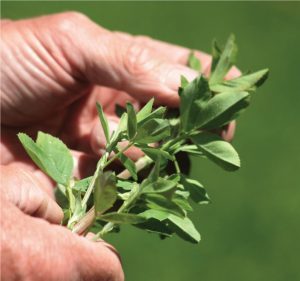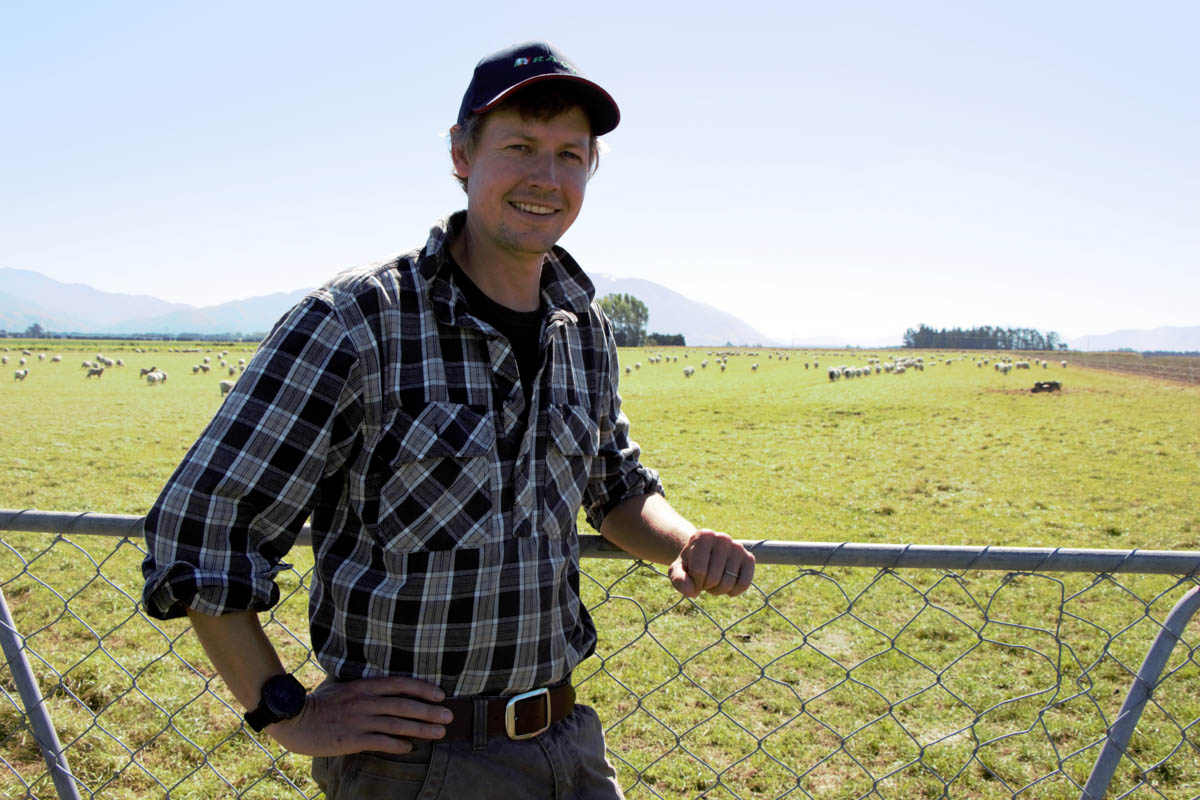BY: TOM WARD
 Lincoln University professor Derek Moot has discussed the challenges ahead, principally dairy farms reaching their biological maximum and dry stock farms in general still exhibiting a nitrogen deficiency.
Lincoln University professor Derek Moot has discussed the challenges ahead, principally dairy farms reaching their biological maximum and dry stock farms in general still exhibiting a nitrogen deficiency.
He made the point that irrigation has taken former dryland farms from annual pasture growth of 8t DM/ha to 14t DM/ha, but it is applied nitrogen that has allowed 20t DM/ha to be grown. Similarly, in the high country, perennially very dry environments, it is the ability to capture early season moisture that determines the season’s success. The key is nitrogen (and sulphur) and that is why lupins are so effective; being a legume, lupins initiate the nitrogen cycle, promoting native tussock and cocksfoot. At Lincoln, dryland pastures increased from 9.8t DM/ha to 15.8t DM/ha simply with the addition of urea, i.e maximising growth when moisture is sufficient.
With dairy on light soils, farmers have taken nitrogen from one biological limit (a deficiency) to another biological limit (the environment) but the same principals apply to feeding dairy cows as to feeding sheep, beef and deer.
The lack of legumes in drystock farms is often due to over-grazing, destroying the legumes and depleting the pasture of the better grasses, leading to browntop dominance. Overgrazing is sometimes due to drought, at other times due to too much set stocking, e.g around lambing.
The systems change by introducing legumes is slower than if the farmer applied nitrogen fertiliser. However once completed locks in a lower cost system. The well-profiled farms of Bonaveree (Avery family) and Bog Roy (Anderson family ) with lucerne, and Tempello (Grigg family) with sub clover on uncultivatable dry hill country, are examples of significantly improving production and profit through the introduction of legumes. For wetter uncultivatable areas, or for irrigated finishing farms, red and white clover with plantain is suitable.
The change in thinking involves understanding that the legume improves spring, early summer growth; it is NOT a solution to summer droughts. Livestock policies need to be designed to utilise the improved early growth so that animals are sold by early summer. So, for example, the focus of research at Lincoln University has been to consistently grow lambs at 300kg /day for 100 days. This has been achieved at Ashley Dene, with lucerne and sub clover on Lismore stony silt loam soils, some of the lowest water holding capacity soils in NZ. Doug Avery became effectively, a farmer of water.
Lucerne, if it is the feed of choice, is still a challenge to manage. Its taproot makes it efficient at accessing moisture, but this attribute becomes a weakness in high rainfall years. In South Canterbury we have to deal with climate variation as much as with drought. Growing lucerne on medium slopes assists with drainage. Lucerne can also be very high in protein in early summer and needs to be balanced with a carbohydrate until it flowers. Lucerne can be difficult to grow where there is an iron pan, and it needs a pH of 5.9-6.0 to thrive. Well-managed lucerne stands are still profitable after 10 years.
In South Canterbury, lucerne can grow between 10 and 18t DM/ha/year, with 60-90 % growing by the end of December. Some farmers are reducing breeding ewe numbers in favour of lamb trading and beef fattening, reflecting the opportunities opened up through growing more early-season feed and also reducing summer stocking pressure.
There is a line of thinking that in North Island uncultivatable hill country, the success of legumes (red, white clovers, sub clover) is too reliant upon the previous season’s rainfall. Some research suggests urea should be applied as the source of nitrogen and this is supported by observations that many northern slopes have, due to lack of moisture, a very low response to phosphate. Nitrogen fertiliser is the suggested answer to a N deficiency, together with some sulphate, which leaches.
• Tom Ward is an Ashburton-based farm consultant.




